Unusual Feeder Visitors
Our usual winter crew at our various bird feeders consists of cardinals, goldfinches, house finches, Carolina wrens, downy and hairy and red-bellied woodpeckers, white-breasted nuthatches, chickadees, titmice, blue jays, and dark-eyed juncos. The ground feeders include white-throated sparrows and mourning doves.
When spring rolls around we’ll see chipping sparrows and rose-breasted grosbeaks. We’ll hang the hummingbird feeder for those tiny beauties. Robins and catbirds will frequent the birdbath. Sometimes grackles and cowbirds hang around.
That’s all I can think of for now. But I thought it would be fun to recall a few of the more unexpected or exceptional feeder visitors who’ve come through.
This pileated woodpecker, for example. We see him and his Mrs. around the neighborhood, but it was an exciting day indeed when he actually tried for the suet cake — and even more exciting that my camera was close at hand!
A couple of years ago, redpolls came through the area in multitudes, and for a few days we were swamped.
Once in awhile, pine siskins come to visit. They look a little like goldfinches, but streakier.
The winter before last, we had a red-breasted nuthatch who came pretty regularly. He was so beautiful and delicate. I wish he’d returned the next year and become a regular.
The grosbeaks and Baltimore orioles aren’t unusual in the spring, but last year they hung out together like buddies and for the first time were really interested in the suet. So many years I’ve hung oranges out hoping to attract the orioles to the feeder, but without results. It was strange the way they came for the suet.
There will be one day every year that we have indigo buntings. They never hang around for long, and it’s always on a rainy day. My pics are never very good.
Evening grosbeaks often pass through, too. They’re never around more than a day. If we didn’t have such a habit of watching, we’d miss them.
Once in awhile, a Cooper’s hawk passes through. We saw him get a robin once a few years ago, and a few times we’ve found piles of feathers. But most of the time when we see him, he’s unsuccessful — except at invoking terror.
Then there are the non-bird visitors, starting with these clowns…
We’ve outsmarted them at our pole feeder with one of those squirrel baffles. It’s fun to see them try, but they never make it to the feeder. But they would jump from the roof to this feeder when we had it out — which we don’t anymore, since the visits from Mr Black Bear last fall. When he tore down the feeder hanging from the eaves of our house, that was a little close for comfort! He did a number on the pole out back, too.
Then there was the gray fox who’d sneak out at dusk and eat seed.
But this was the prettiest — and saddest — visitor, an injured fawn who came to drink from the bird bath, then curled up to sleep.
I called a wildlife rehabber about what to do, but the little guy never came back. At least he was able to get some refreshment on a hot day.
How about you? What riff raff — invited or uninvited — has your feeder brought into your life?
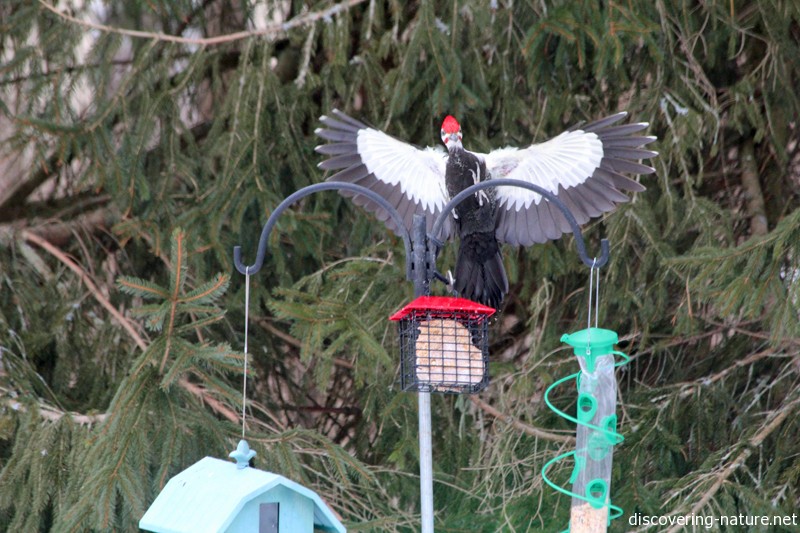

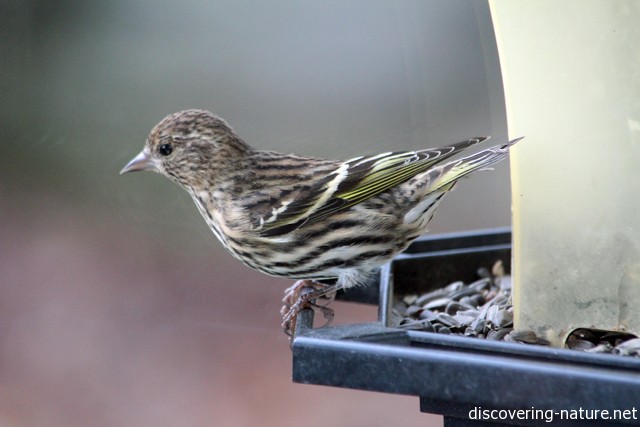
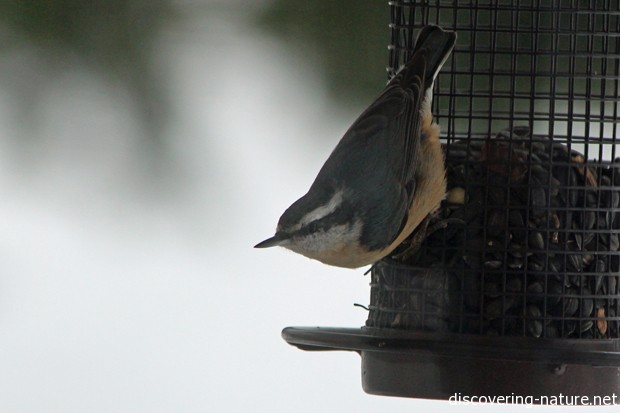

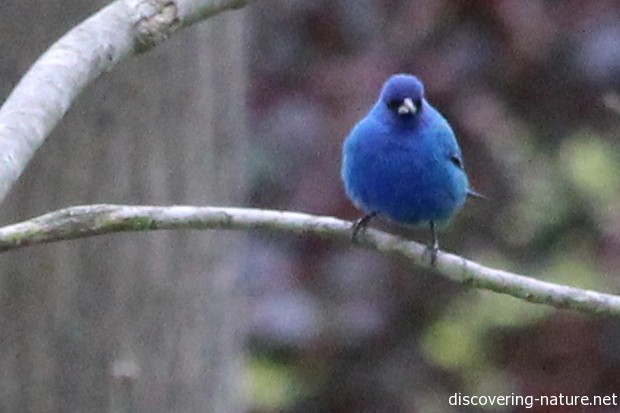





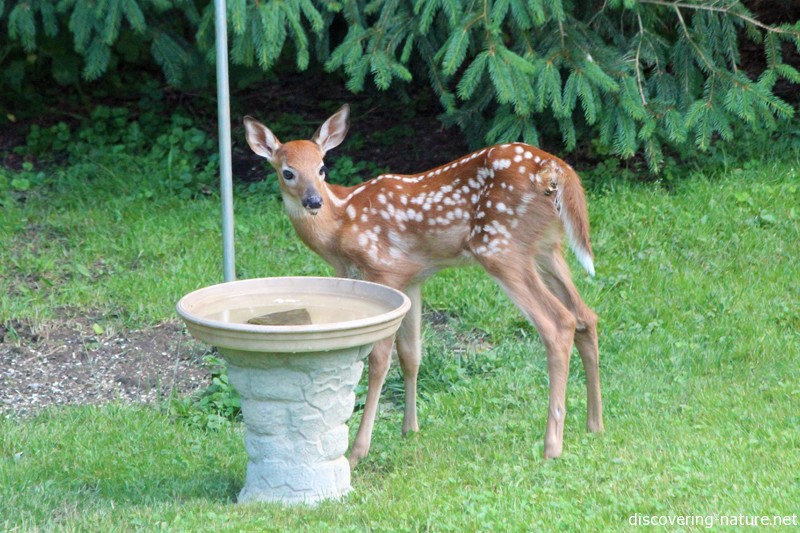
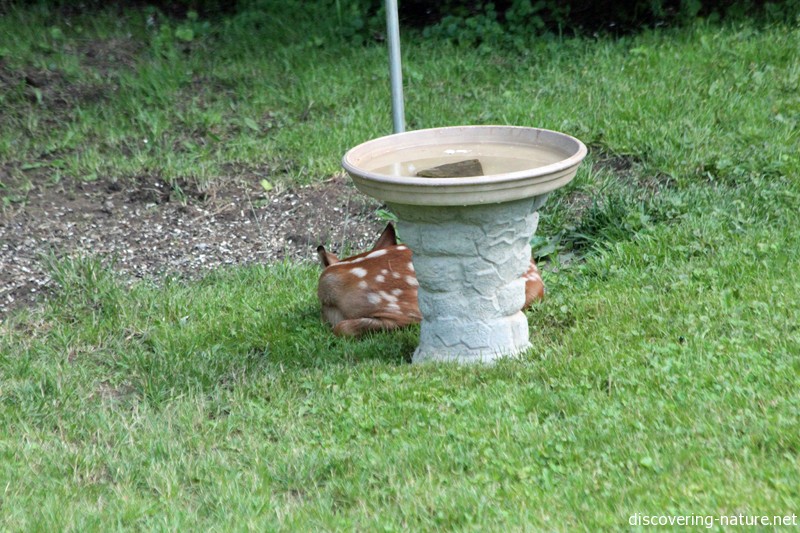

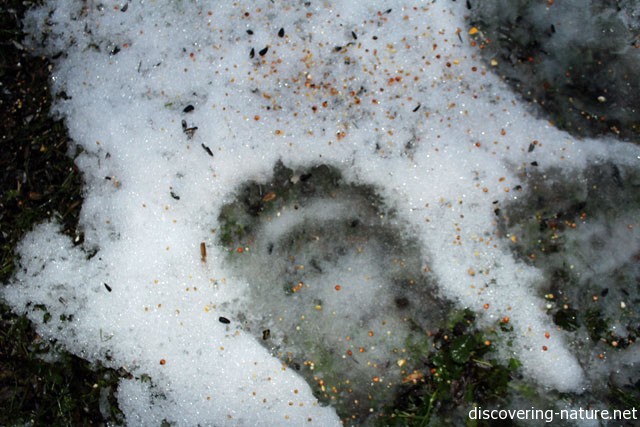
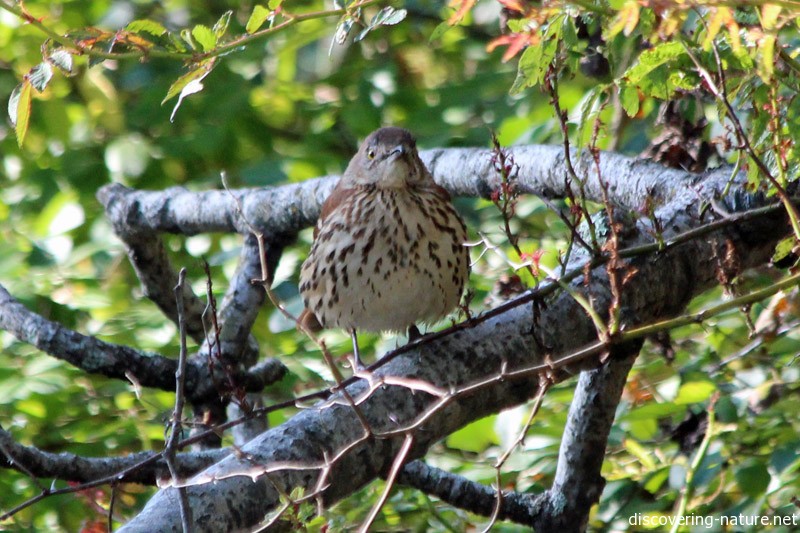
2 Comments
Margaret Mollick
I enjoy so much your photographs … thank you for sharing. Reminds me of our back yard when we lived in Michigan for 14 years (1963-1977) … we had a virgin forest behind our home and never tired of watching Nature’s critters.
AnneMarie
Love your pictures. Such a treat for the eyes. (smile) We live in the desert of southern
California and our wildlife is quite different. Not as colorful as yours. We get an occasional
road runner, lots of hummingbirds, falcons, coopers hawks, quail, pigeons, doves, sparrows,
and a turkey vulture one time. Had a couple mountain bluebirds roosting here for 3 years in
a row but they haven’t returned. Several other varieties pass through but I haven’t
learned their names yet. I’m working on it. LOL We have ground squirrels and bunnies
galore. And coyotes.